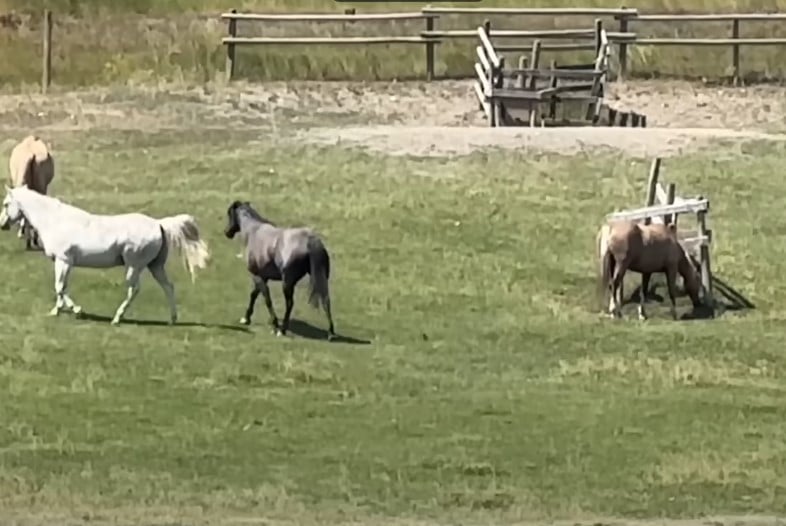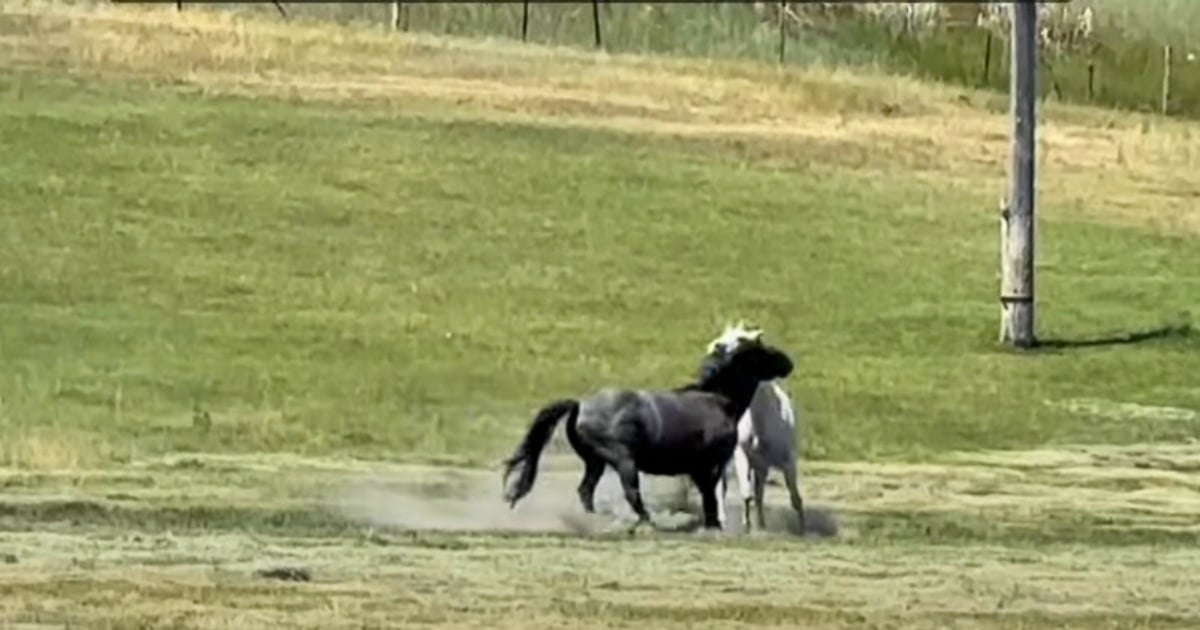A captivating video has been making waves online, showcasing the intriguing behavior of horses and highlighting their natural instincts even when domesticated.
The video stars two horses, an older one named Cash and another named Rednik, interacting near a water source.
This heartwarming interaction has gained 2.7 million views in just a few days!
The footage offers a unique glimpse into equine behavior and the deep connections between domesticated and wild horses.

Equine behavior is a fascinating subject, revealing much about the nature of these majestic animals.
Horses, whether wild or domesticated, possess an innate set of behaviors that govern their interactions and social structures.
These behaviors include strong herd dynamics, clear communication through body language, and a natural hierarchy.
Understanding these behaviors helps in appreciating the deep-rooted instincts that domesticated horses like Rednik and Cash still exhibit.

The video captures a particularly interesting moment where Rednik, a domesticated horse, directs the older Cash towards the water.
This interaction is more than just a simple push; it’s a demonstration of Rednik’s understanding of horse body language and the social dynamics within their small herd.
Even in a domesticated setting, Rednik’s actions mirror those seen in wild horse herds, where more dominant or aware horses often guide and protect their peers.

As the scene unfolds, Rednik detours from his path to the water and starts gently pushing Cash up the hill towards the water source.
This behavior is fascinating because it shows how domesticated horses retain the same natural instincts seen in their wild counterparts.
In the wild, horses often look out for each other, ensuring that all members of the herd are safe and have access to essential resources like water and food.

Rednik’s actions are not just random nudges but are indicative of a deeper understanding and communication between the two horses.
By directing Cash, Rednik demonstrates a clear grasp of social hierarchy and the responsibilities that come with it.
This act of guiding an older horse to water is a testament to the strong social bonds and the instinctive behavior that even domesticated horses exhibit.

Cash, the older horse, follows Rednik’s lead without resistance, showcasing the natural hierarchy and communication among horses.
This willingness to follow indicates a level of trust and respect within their relationship, reminiscent of the dynamics seen in wild herds.
The older horse’s compliance underscores the importance of social structure in equine communities, whether in the wild or domesticated environments.

The video’s widespread popularity is proof of the universal appeal of witnessing such natural behavior.
One viewer aptly captured the sentiment with a witty remark:
“Reminds me of the old adage: You can lead a horse to water but you can’t make him drink . . . unless you’re Rednik.”
This shows the admiration for Rednik’s impressive display of natural leadership and care.

Beyond the heartwarming interaction, this serves as a reminder of the deep connections between domesticated and wild horses.
It emphasizes that, despite domestication, horses still retain many of their natural behaviors and instincts.
These behaviors are essential for their social interactions and overall well-being, underscoring the importance of understanding and respecting their natural tendencies.

Cash and Rednik near the water source provide a fascinating look into equine behavior and the enduring instincts of domesticated horses.
Rednik’s actions in guiding Cash not only demonstrate the social dynamics and communication among horses but also highlight the deep-rooted instincts that persist despite domestication.
With millions of views and countless comments, this video has resonated with many, offering a beautiful glimpse into the world of horses and their timeless natural behaviors.
See the incredible moment unfold in the video below!
Please SHARE this with your friends and family.














